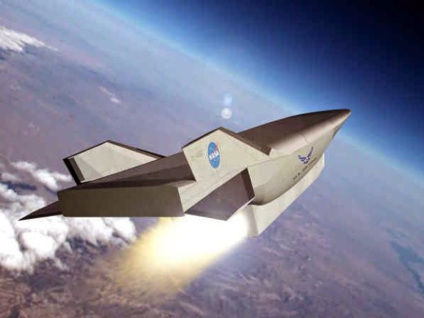This course consists of 3 Hours of Video Lectures and accompanying Handouts/Materials
The extreme operating environment of hypersonic air and space vehicles poses numerous technical challenges for airframe and propulsion system development. High operating temperatures and heat fluxes, coupled with aggressive weight targets for air and space missions, place a premium on intelligent materials selection and structural concept development.
The first part of this course provides an overview of the material classes appropriate for hypersonic vehicles, with emphasis on their physical and mechanical properties and operating temperature ranges. Titanium and nickel-based superalloys, ceramic matrix composites and carbon-carbon composites are each discussed. Material selection criteria are also explained with reference to material properties and behavior. Several prominent materials applications on hypersonic vehicles are also provided to illustrate the topics discussed.
The second part of the course focuses on structural concepts for hypersonic air and space vehicles. Thermal management approaches and thermal structures concepts are explained and illustrated. Thermal protection system concepts are reviewed along with results of a trade study to illustrate how these concepts are evaluated and selected. Hypersonic leading-edge structures are examined in detail as an example structural application. Primary structure applications and associated challenges are also discussed. Both portions of this course contain lists of readily available references to facilitate further learning.

Learning Objectives
- Provide an introduction to materials and structures for hypersonic vehicles, with emphasis on technical challenges and current approaches to meeting those challenges
- Promote basic understanding of microstructure/property relationships for hypersonic materials, and appropriate operating temperature ranges for different material classes
- Develop understanding and appreciation of the materials selection methodology
- Develop understanding of thermal management approaches for hypersonic structures and illustrate basic thermal structure behavior
- Provide examples of hypersonic structures development to illustrate applications of the concepts
- Provide references and guidance to facilitate further study beyond the short course
Audience
Intended for engineers seeking an introduction to materials & structures issues, basic physical principles and recent accomplishments in the field of hypersonic material and structures.
Instructors
Dr. Steven G. Russell
Steve Russell is Principal Engineer for Russell Aerostructures Consulting, LLC in Tyler, TX. He retired from Triumph Aerospace Structures in 2015 after a 27-year career with Northrop, Northrop Grumman, Vought Aircraft and Triumph. He received B.A, B.S, M.S and Ph.D. degrees from the University of Notre Dame before starting full time employment with Northrop in 1987. Steve has worked on numerous government/industry R&D programs during his career, which has included both technical and management positions. He was leader of the Vought Aircraft stress group on the Boeing 787 program, overseeing all structural analysis on the two aft fuselage sections from 2003 – 2009. He was leader of the technical study team in 2010-2011 on Triumph’s successful proposal for design and manufacturing of the wings on the new Bombardier Global 7000 business jet. He was heavily involved in the test & certification program on the Global 7000. Steve is author or coauthor of numerous technical papers and is very active in AIAA, where he was Chair of the Structures Technical Committee from 2014 – 2016. His primary research interests are in structural stability, damage tolerance of composite and metallic aircraft structures, and high temperature materials and structures.
| Title | Credit(s) | |
|---|---|---|
| 1 | ||
| 2 | ||
| 3 | ||
| 4 | ||
| 5 | ||
| 6 |